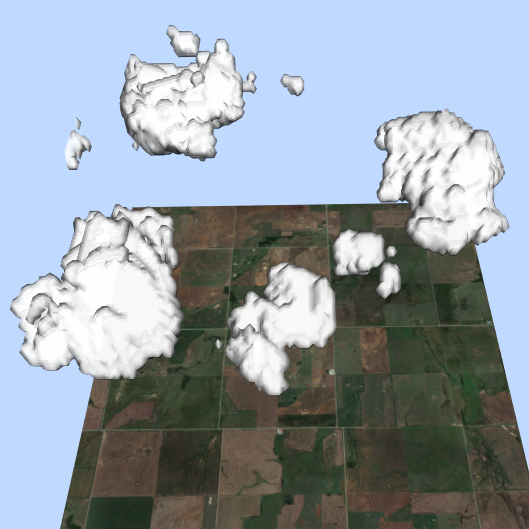Romps and Öktem, Observing clouds in 4D with multiview stereophotogrammetry, BAMS, 2018
Paper
Description
Shallow cumulus clouds play a large role in Earth's current radiation balance, and their response to global warming makes a large and uncertain contribution to Earth's climate sensitivity. To develop accurate theories and parameterizations of shallow cloud cover, we need measurements of clouds' horizontal dimensions, their elevations, their depths, the rate at which they are created, the rate at which they dissipate, and how all of these factors vary with changes to the large-scale environment. Only observations that are high-resolution relative to individual clouds in all four dimensions (space and time) can provide these needed data.
Towards this end, we have installed a ring of cameras around the Southern Great Plains (SGP) Atmospheric Radiation Measurement (ARM) site in Oklahoma. Six digital cameras are situated in pairs at a distance of 6 kilometers from the site and with a spacing of 500 meters between cameras in a pair. These pairs of cameras provide stereoscopic views of shallow clouds from all sides; when these data are combined, they allow for a complete stereo reconstruction. The result, called the Clouds Optically Gridded by Stereo (COGS) product, is a 4D grid of cloudiness covering a 6 km x 6 km x 6 km cube at a spatial resolution of 50 meters and a temporal resolution of 20 seconds. This provides an unprecedented set of data on the sizes, lifetimes, and lifecycles of shallow clouds.
Snapshot of the COGS 4D reconstruction of clouds over a 6-km-wide square domain centered on the SGP Central Facility.
